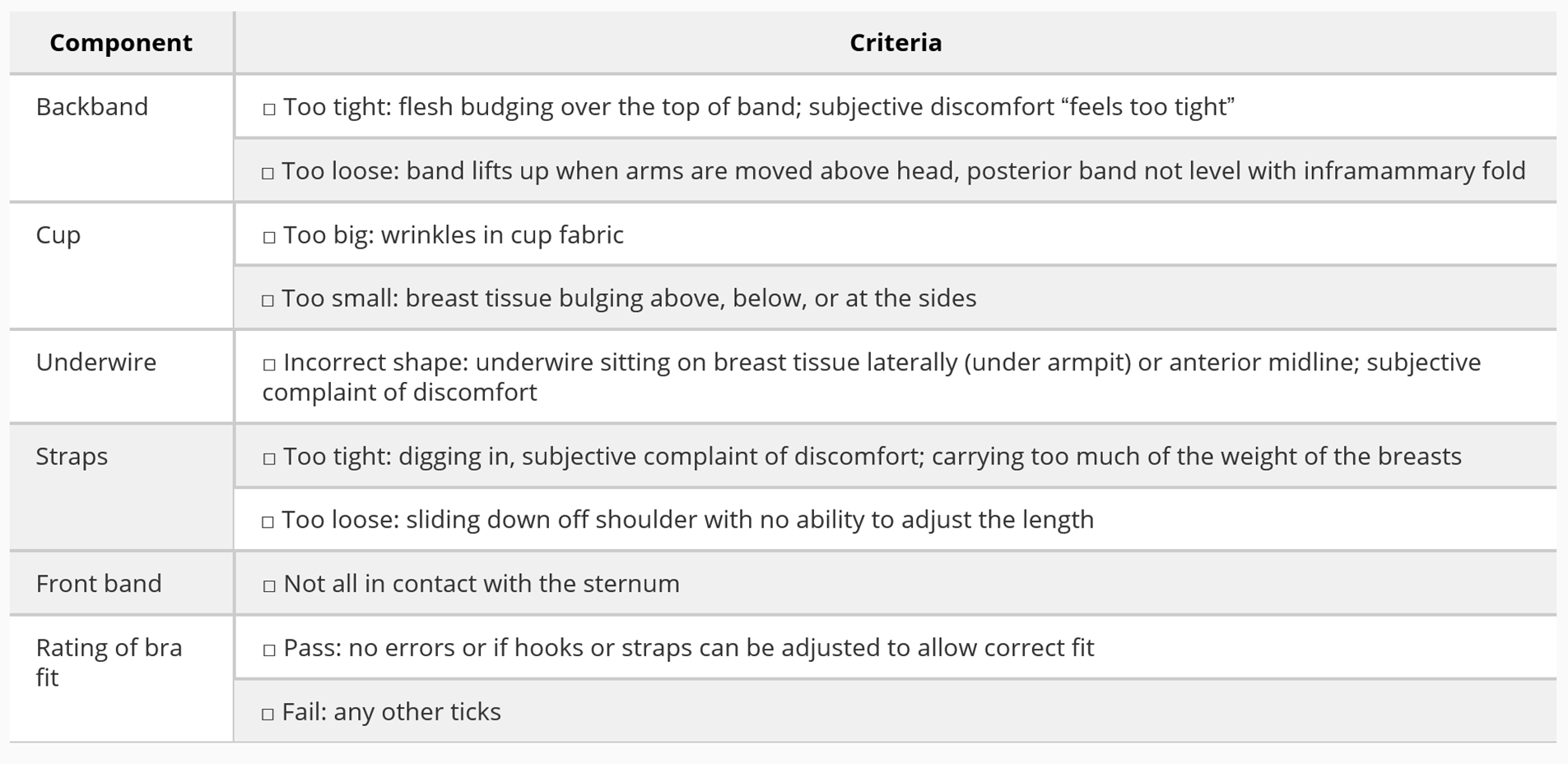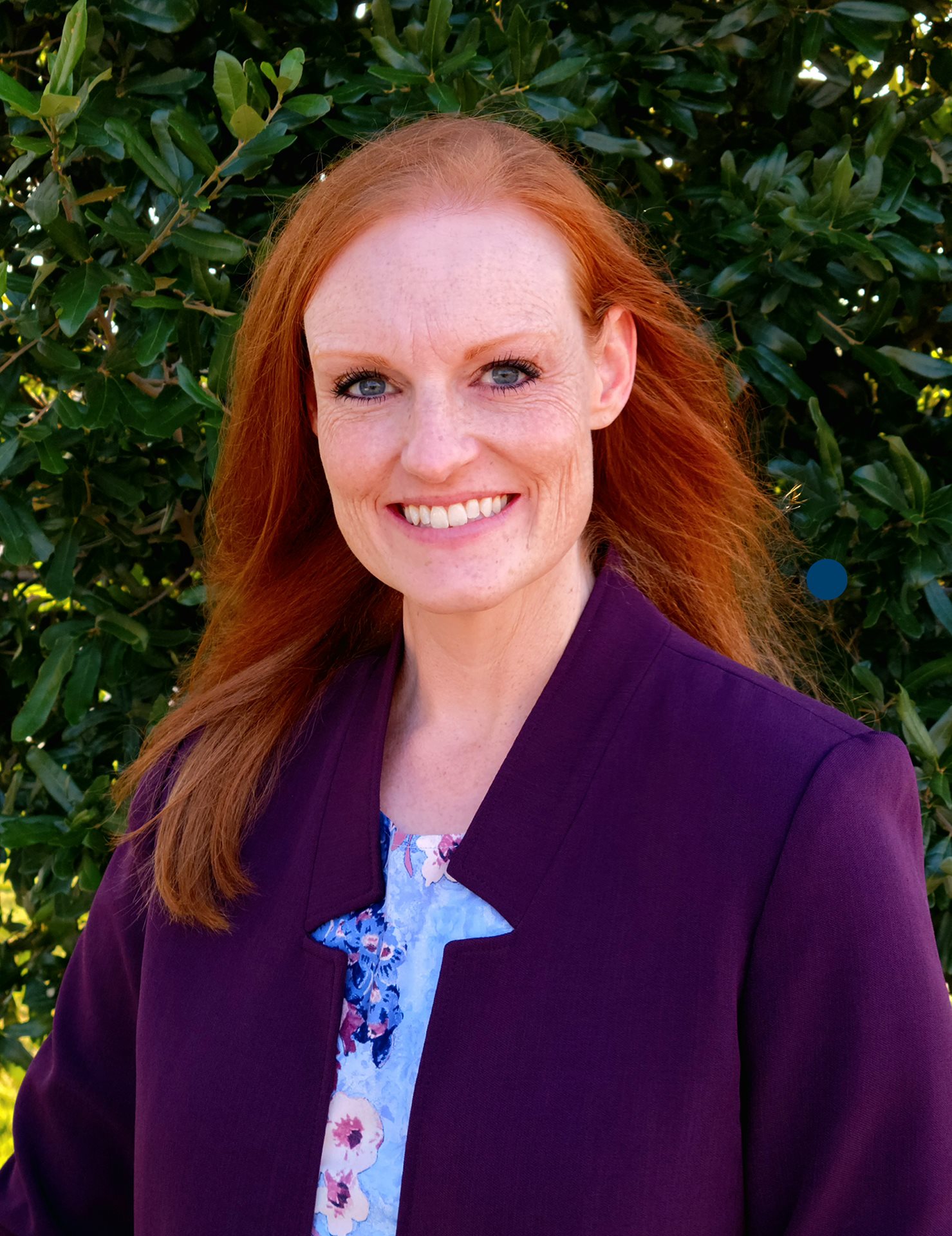February 2024
Bras. What a disaster.
By Andrea Porter
As I was working on my proposal involving women’s body armor, I came across a women’s issue that set me back. My jaw kept dropping lower and lower the more I read. It’s not a subject I talk about with my friends, much less others. Nonetheless, I cannot just sit on this information.
The subject: Bra sizing.
What. a. disaster.
First, 50%-100% of women wear the wrong size bra, depending on which study you read [1-4]. The best cross sectional study I read found 85% wearing the wrong bra [4].
But how hard can this be? You go in the store or buy online and go with what fits.
That’s what 85% said.
As you may know, bras are sized using the difference between the circumference of the chest at its largest point from the circumference of the chest beneath the breasts. The resultant number is then used to determine cup size, and we take that to the store.
If only it were that easy. In actuality, cup size is not standardized across brands.
One study compared each cup volume of various brands to the mean of the cup for all brands. Calvin Klein’s cups ran smaller than the average while Bali ran larger. For Madienform, all cups followed the national average except for the B cup which was 7 mm larger than the average [7]. Those measurements you just took may mean nothing for cup size.
Another little-known fact: anthropometrics (measurements and proportions) of a target market sample do not inform the creation of garments for ready-to-wear garment designers (as opposed to bespoke designers.) Brand designers choose a “fit model”—a real person who is a specialized, trained professional—on whom they design their garments. Additional sizes are made according to the designer’s own formula for proportioning up and down from the fit model, making sizing an art.
That explains why, if you’re like me, there are some brands you cannot wear no matter the size. They don’t fit right because you’re proportioned differently than the designer’s fit model.
Bra expert Laura Tempesta explained bra fitting in a TED Talk from TEDxKC, elaborating that the measurements you take are the place to start. If the expected size bra doesn’t fit, finding the right size can be subject to “sister sizing” [8]. Sister sizing comes into play when a woman finds the cup fits, but the band is too tight. Let’s say she finds this true of a 34C. One might naturally think to try a 36C to increase the band but not the cup; however, increasing to the next band size increases the volume of the cup in some designers. The 34C sister size is actually a 36B, which has a larger band but the same size cup as 34C.
85% sounds about right now, doesn’t it? So now get this -
Women’s breasts change in size an average of 76 ml (about the volume of a 1/3 measuring cup) during the course of the menstrual cycle with breast volume being approximately 13% greater at menses than at the lowest volume during the month [9]. Additional factors affecting breast size, just not as often, are weight gain or loss, muscle tissue increase or decrease in the pecs, and pregnancy and breastfeeding [9].
This leaves many of us saying, “But it fit yesterday!!”
How do you get a good fit? Can you get a good fit? The experts say it’s possible.
Professional bra fitters consider five criteria for a good fit. The cup and band are two factors that dictate the size, then the underwire placement, straps and center gore (or the center of the front band) dictate the best model within the size [4]. The criteria and qualitative metrics for a good bra fit are found in Figure 1 with a pictorial guide of the same information in Figure 2. Underwire is used for aesthetically shaping the breast, encapsulating each breast separately, and transferring downward breast weight pressure to the bra band [5]. Not all bras contain an underwire feature because it can cause discomfort. Figure 1 provides some guidance in how underwire should fit correctly.
One more word of advice from Tempesta: bras should not have a birthday. Sweat, washing, general wear, and especially heat degrades the effectiveness of the elastic in the garment. Plus, given the change in the breast size from various factors, it’s good to check for a better fit. Try different sizes, brands and styles to see if something better has come out since the previous year.
I have good news on the bra shopping front. Black Friday sales include bras on deep discount but make this a strategic shopping event. Block off a couple of hours on your calendar in early November, go to the stores and try on every size you didn’t think you were. Use the guides below guides in the two figures to help you determine the right size. When you find the right one save the info on your phone, and order from your couch when Black Friday rolls around.
Now that you know the real scoop on bras, I wish you all the luck in the world in finding the right bra – you’ll need it!

Figure 1 Professional Bra Fit Criteria [5]

Figure 2 Pictorial Bra Fit Chart [6]
[1] S. J. Lee, W. Y. Han, J. S. Eom, E. K. Kim, and H. H. Han, "Analysis on the Difference between the Practical Brassiere Size and Real Breast Volume," Plastic & Reconstructive Surgery-Global Open, vol. 11, no. 8, pp. e5141-e5141, 2023, doi: 10.1097/GOX.0000000000005141.
[2] A. R. Greenbaum, T. Heslop, J. Morris, and K. W. Dunn, "An investigation of the suitability of bra fit in women referred for reduction mammaplasty," British Journal of Plastic Surgery, vol. 56, no. 3, pp. 230-236, 2003, doi: 10.1016/S0007-1226(03)00122-X.
[3] S. Lisa, "Profile: Problem of women wearing the wrong bra size," in Weekend Edition All Things Considered, ed: NPR, 2000.
[4] D. E. McGhee and J. R. Steele, "Optimising breast support in female patients through correct bra fit. A cross-sectional study," Journal of Science and Medicine in Sport, vol. 13, no. 6, pp. 568-572, 2010, doi: 10.1016/j.jsams.2010.03.003.
[5] C. E. Coltman, J. R. Steele, and D. E. McGhee, "Which Bra Components Contribute to Incorrect Bra Fit in Women Across a Range of Breast Sizes?," Clothing and textiles research journal, Periodical vol. 36, no. 2, pp. 78-90, 2018, doi: 10.1177/0887302X17743814.
[6] A. Jiang, X. Yao, V. Cheung, L. W. Taylor, H. Tang, and Z. Fang, "The effect of body shape and swimsuit type on the comfort of Chinese women wearing swimsuits," (in English), Textile Research Journal, Journal Article vol. 93, no. 7-8 p.1551-1567, pp. 1551-1567, 01/01 / 2023, doi: 10.1177/00405175221132012.
[7] B. P. Bengtson and C. A. Glicksman, "The Standardization of Bra Cup Measurements: Redefining Bra Sizing Language," Clinics in Plastic Surgery, vol. 42, no. 4, pp. 405-411, 2015, doi: 10.1016/j.cps.2015.06.002.
[8] L. Tempesta, "You'll never look at a bra the same way again," in TEDx, ed. TED.com, 2018.
[9] Z. Hussain, N. Roberts, G. H. Whitehouse, M. Garcia-Finana, and D. Percy. (1999) Estimation of breast volume and its variation during the menstrual cycle using MRI and stereology. 236-245. Available: 10.1259/bjr.72.855.10396212
